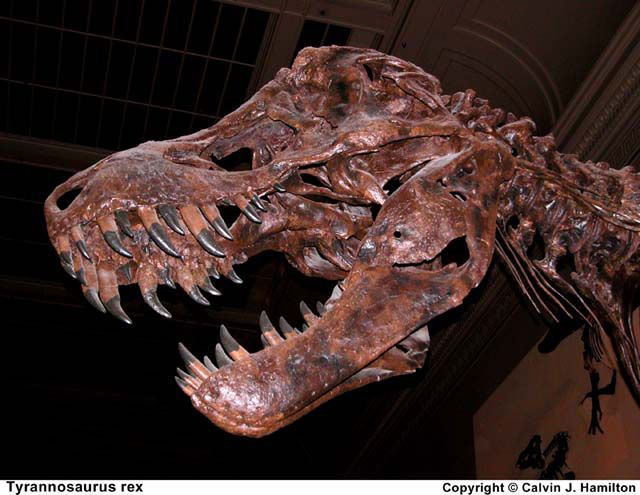Dinosaur Horns and Crests Tied to Rapid Growth Spurt

Some dinosaurs that had bony protrusions on their skulls — such as horns, crests and knobs — evolved into giant dinosaurs 20 times faster than their relatives without skull ornaments did, a new study finds.
The study, which focused on theropods — a group of mostly carnivorous, bipedal dinosaurs that includes the giant Tyrannosaurus rex and fearsome Albertosaurus — could explain why these dinosaurs got big so fast, the researchers said.
Paleontologists have hypothesized for years that these bony protrusions on dinosaur skulls served to intimidate, defend and communicate, possibly signaling which individuals were sexually mature or socially dominant, the researchers said. [Album: Animals' Dazzling Headgear]
"For the first time, we're starting to recognize that signaling structures in theropod dinosaurs played a major role in shaping their evolution," said study lead researcher Terry Gates, a lecturer in the department of biological sciences at North Carolina State University.
The idea for the research began after Gates had studied countless theropod remains.

"One day … the thought just struck me that based on my observations, there didn't seem to be any ornamentation in very small theropod [species], but larger ones seemed to have it," Gates told Live Science.
To investigate, he and his colleagues examined 111 theropods that did and did not have skull ornaments, and compared their size increases over time. "We put together an initial data set just to see if there was a correlation between body size and the presence or absence of ornamentation, and there certainly was," he said.
Sign up for the Live Science daily newsletter now
Get the world’s most fascinating discoveries delivered straight to your inbox.
Twenty of the 22 largest theropod species had bony bumps or crests on their skulls, including T. rex and Allosaurus, which both had small hornlets in front of their eyes.
However, it's unclear whether these bony structures were a direct cause of the growth or were simply correlated with another factor that promoted growth, Gates said.
Weight and feathers
The researchers also found that theropods weighing under about 80 lbs. (36 kilograms) lacked skull ornaments. Once larger theropod species developed cranial protrusions, the dinos would rapidly grow to enormous body sizes every 4 million to 6 million years, the scientists found.
Giant theropod dinosaurs that lacked skull ornaments, such as the Cretaceous-age Acrocanthosaurus, took longer to achieve their immense stature, the researchers found.
In addition, the scientists looked at the theropods that were closely related to birds, including maniraptoriforms like Velociraptor. However, although these dinosaurs weighed more than 80 lbs., they didn't have any bony protrusions on their skulls, Gates said.
Instead, these bird-like dinosaurs likely used their feathers, not bony bulges, for visual communication, the researchers said. [Photos: Birds Evolved from Dinosaurs, Museum Exhibit Shows]
"Our work supports the idea that veined feathers were great communication tools from the get-go and may have helped large birdlike theropods sidestep the bother of skeletal bells and whistles," study co-author Lindsay Zanno, a paleontologist at North Carolina State University, said in a statement.
A further look
However, the authors note that the finding on the weight threshold is still preliminary, as the study included only 38 ornamented theropod species.
Moreover, the authors put all of the bony protrusions in the same category, said Steve Brusatte, a paleontologist at the University of Edinburgh in Scotland who was not involved with the study.
"This study considers all cranial ornaments to be the same: The meat eaters are assessed for the absence or presence of any type of ornament, which may be simplistic because there are so many different types of crests, horns, bumps, etc. in dinosaurs," Brusatte told Live Science in an email. "A more nuanced study may be able to recognize differences caused by the different types of ornaments."
The study was published online today (Sept. 27) in the journal Nature Communications.
Original article on Live Science.

Laura is the archaeology and Life's Little Mysteries editor at Live Science. She also reports on general science, including paleontology. Her work has appeared in The New York Times, Scholastic, Popular Science and Spectrum, a site on autism research. She has won multiple awards from the Society of Professional Journalists and the Washington Newspaper Publishers Association for her reporting at a weekly newspaper near Seattle. Laura holds a bachelor's degree in English literature and psychology from Washington University in St. Louis and a master's degree in science writing from NYU.
Most Popular

